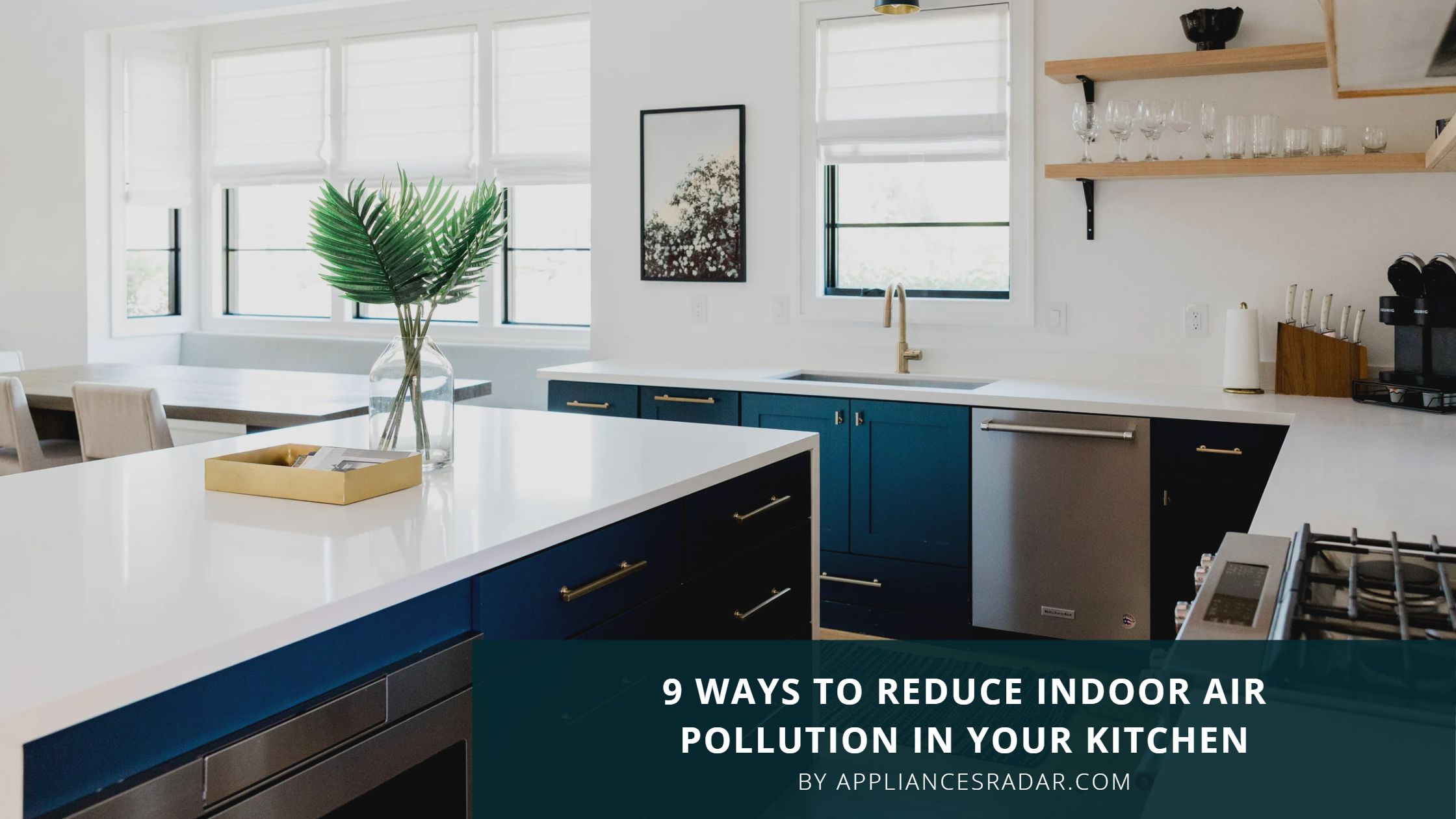
The kitchen is often the heart of the home. It's where families gather to cook and eat together. But did you know that the kitchen can also be a source of indoor air pollution? In this blog post, we will discuss nine ways to reduce indoor air pollution in your kitchen.
Definition of Indoor Air Pollution
Indoor Air Pollution is the accumulation of pollutants, particulate matter, and emissions caused by activities such as cooking, heating, and the use of candles, among others.
It can come from both outside sources, like through open doors and windows, or from inside sources such as mold spores originating in basements, cleaning products, and other household items with volatile organic compounds (VOCs).
Inadequate ventilation can lead to higher concentrations of airborne pollutants indoors than what are found outdoors.
Long-term exposure to these pollutants can be detrimental to our health, causing respiratory illnesses and heart disease. Proper ventilation is critical for maintaining healthy indoor air quality.
How Kitchen Can be a Source of Indoor Air Pollution
Kitchen activities are known to generate pollutants such as gases and particles. These pollutants can linger in the air and contribute to poor indoor air quality, with potentially serious health consequences.
Common sources of indoor air pollution in the kitchen include cooking, storing food improperly, using hazardous household cleaners and chemicals, burning candles or incense, and operating gas-burning appliances such as stoves or furnaces.
Indoor air pollutants from these activities can increase symptoms of allergies and asthma attacks. Additionally, radon gas can escape from soil near basements or ground floors to enter your home through kitchen areas and worsen indoor air quality even further.
It is therefore important to understand how kitchen activities may be impacting your indoor environment so that steps can be taken to reduce their negative effects.
Ways to Reduce Indoor Air Pollution in the Kitchen
1. Proper Ventilation
Ensure that your kitchen is well-ventilated with fresh air entering from outside. Open windows and install exhaust fans to help bring in the fresh air and remove pollutants from the space.
2. Reduce the Use of Chemical Cleaners
Avoid using harsh chemical cleaners and use natural alternatives when possible.
3. Store Food Properly
Store food in airtight containers and keep the temperature of your fridge and freezer at an appropriate level to avoid spoilage.
4. Maintain Healthy Humidity Levels
Use a dehumidifier or humidifier as needed to maintain healthy humidity levels, ideally around 40%.
5. Clean Up Spills Immediately
Wipe up spills promptly and use natural, non-toxic cleaning products when mopping or scrubbing.
6. Avoid Burning Candles & Incense
Limit the use of candles and incense in your kitchen to reduce potential airborne pollutants.
7. Use Gas Appliances Properly
Make sure gas-burning appliances such as stoves and furnaces are properly vented and regularly inspected.
8. Perform Regular Maintenance & Cleaning
Dust, vacuum, and mop regularly to reduce the buildup of harmful particles in your kitchen.
9. Test for Radon Gas
Have your home tested for radon gas at least every two years to ensure that levels are not too high indoors.
Conclusion
Indoor air pollution can be caused by a variety of activities that take place in the kitchen. It is important to understand how these activities can potentially cause health risks and take the necessary steps to reduce their impact on indoor air quality.
With proper ventilation, cleaning, maintenance, and use of natural alternatives when possible, you can help to ensure that your kitchen is a safe, healthy environment.












